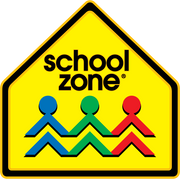Learning to make letters starts by tracing them
Introducing young children to the alphabet can be both fun and rewarding with the right tools. Alphabet tracing activities are a great way to help early learners learn letters. These activities provide a practical way to make learning fun and effective.
Benefits of tracing activities
- Improves Fine Motor Skills: Tracing letters helps children develop the fine motor skills needed for writing.
- Helps Recognize Letters: Frequently tracing letters familiarizes children with their shapes and forms.
- Boosts Confidence: Completing tracing activities gives children a sense of accomplishment and boosts their confidence.
- Encourages Practice: Tracing activities provide a structured way for children to practice writing letters, essential for mastery.
- Fun Learning: Tracing can be an engaging activity that keeps children interested in learning.
More reasons to choose alphabet tracing activities
Parents and educators often seek effective ways to teach children the alphabet. Alphabet tracing activities are a popular choice because they are:
- Easy to Use: Simple to integrate into any learning routine.
- Accessible: Many websites offer free printable alphabet tracing worksheets.
- Versatile: Useful both at home and in the classroom.
- Customizable: Can be tailored to focus on specific letters or patterns that need extra practice.
How to use alphabet tracing activities well
To get the most out of alphabet tracing activities, use them effectively. Here are some tips:
- Start with Simple Letters: Begin with easy letters like 'L' and 'T', then move to harder shapes like 'S' and 'B'.
- Use Consistent Practice: Set aside a few minutes each day for tracing activities to reinforce learning.
- Encourage Proper Grip: Teach your child the correct way to hold a pencil for effective tracing.
- Make it Fun: Use colorful pencils or markers and praise your child's efforts to keep them motivated.
- Combine with Other Activities: Pair tracing activities with activities like singing the ABC song or reading alphabet books for comprehensive learning.
Products that offer alphabet tracing activities
There are numerous products available that can help children develop their alphabet tracing skills. Here are some popular options:
- Workbooks: Preschool, kindergarten and alphabet workbooks often include a variety of tracing activities. These workbooks are designed to engage children with colorful illustrations and structured exercises that guide them through the process of learning to write letters. Some have a laminated surface giving them a write on and wipe-clean feature.
- Flash Cards: Alphabet flash cards can be a versatile tool. They can be used to reinforce letter recognition and provide a hands-on way for children to trace letters with their fingers or a dry-erase marker.
- Games: Educational games that incorporate alphabet tracing activities can make learning fun. These games often involve tracing letters as part of a larger game, helping children stay engaged and motivated.
- Printable Worksheets: Many websites offer free printable alphabet tracing worksheets. These can be easily accessed and printed, providing a convenient resource for practice at home or in the classroom.
- Digital Apps: Interactive apps designed for tablets and smartphones often include alphabet tracing activities. These apps can provide instant feedback and allow children to practice tracing letters in a dynamic, engaging way.
These products provide structured and enjoyable methods for children to practice alphabet tracing, helping to build their fine motor skills and letter recognition. Whether used at home or in the classroom, these resources can support early literacy development effectively.
Summary
Alphabet tracing activities are a valuable resource for early learners, offering a range of benefits such as improved fine motor skills, letter recognition, and confidence. By integrating these activities into daily routines and using them effectively, parents and educators can support children's early literacy and writing skills in a fun and engaging way.











